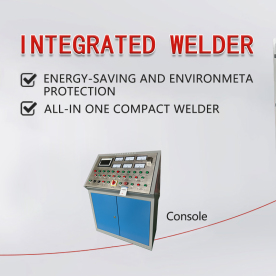[High-efficiency induction heating equipment]Exploring the Advancements and Benefits of High-Efficiency Induction Heating Equipment in Modern Industrial Applications
News 2024-12-3

Exploring the Advancements and Benefits of High-Efficiency Induction Heating Equipment in Modern Industrial Applications
Induction heating works on the principle of electromagnetic induction, wherein an alternating electric current is passed through a coil to create a magnetic field. This magnetic field induces an electric current within the conductive material placed within the field, generating heat due to electrical resistance. High-efficiency induction heating equipment optimizes this process by utilizing advanced technologies that improve energy transfer, reduce heat loss, and enhance overall performance.

Exploring the Advancements and Benefits of High-Efficiency Induction Heating Equipment in Modern Industrial Applications
Moreover, the precision and control offered by high-efficiency induction heating equipment are unparalleled. Operators can easily adjust parameters such as temperature and heating time, enabling precise control over the heating process. This level of control is especially crucial in applications such as hardening, annealing, and brazing, where specific temperatures and timeframes are critical to achieving desired material properties. The ability to monitor and manage these parameters in real-time translates to improved product quality and consistency.
The versatility of high-efficiency induction heating equipment also sets it apart from traditional methods. It can be used for various applications, including melting metals, heat treating, soldering, and even plastic welding. This adaptability makes it suitable for a wide range of industries, including automotive, aerospace, medical, and electronics. As manufacturing processes become more complex and diverse, the need for versatile heating solutions becomes increasingly important.
Additionally, high-efficiency induction heating equipment promotes a safer workplace environment. Traditional heating methods can emit hazardous fumes, pose burn risks, and create flammable environments due to open flames. In contrast, induction heating operates with minimal risk; the heating is localized, and equipment typically features automatic shut-off systems, reducing the hazards associated with manual oversight. This safety feature not only protects workers but also minimizes the potential for equipment damage and production downtime, contributing to overall operational efficiency.

Exploring the Advancements and Benefits of High-Efficiency Induction Heating Equipment in Modern Industrial Applications
With ongoing research and development in the field, we can expect even more innovations in high-efficiency induction heating equipment. Smart technologies, including IoT capabilities, are paving the way for automated and interconnected heating systems that provide real-time data, predictive maintenance alerts, and enhanced user experience. This forward-thinking approach ensures that businesses not only meet current demands but also adapt to future challenges in manufacturing.
In conclusion, high-efficiency induction heating equipment represents a substantial evolution in heating technology, offering enhanced energy efficiency, precision, versatility, and safety. As industries continue to innovate and adapt to market demands, the adoption of induction heating solutions is likely to grow. Manufacturers looking to streamline their processes, reduce costs, and improve product quality should consider investing in high-efficiency induction heating equipment as a viable and sustainable solution for their heating needs. This investment not only benefits their operational performance but also supports broader environmental sustainability efforts, making it a win-win for both industries and the planet.
